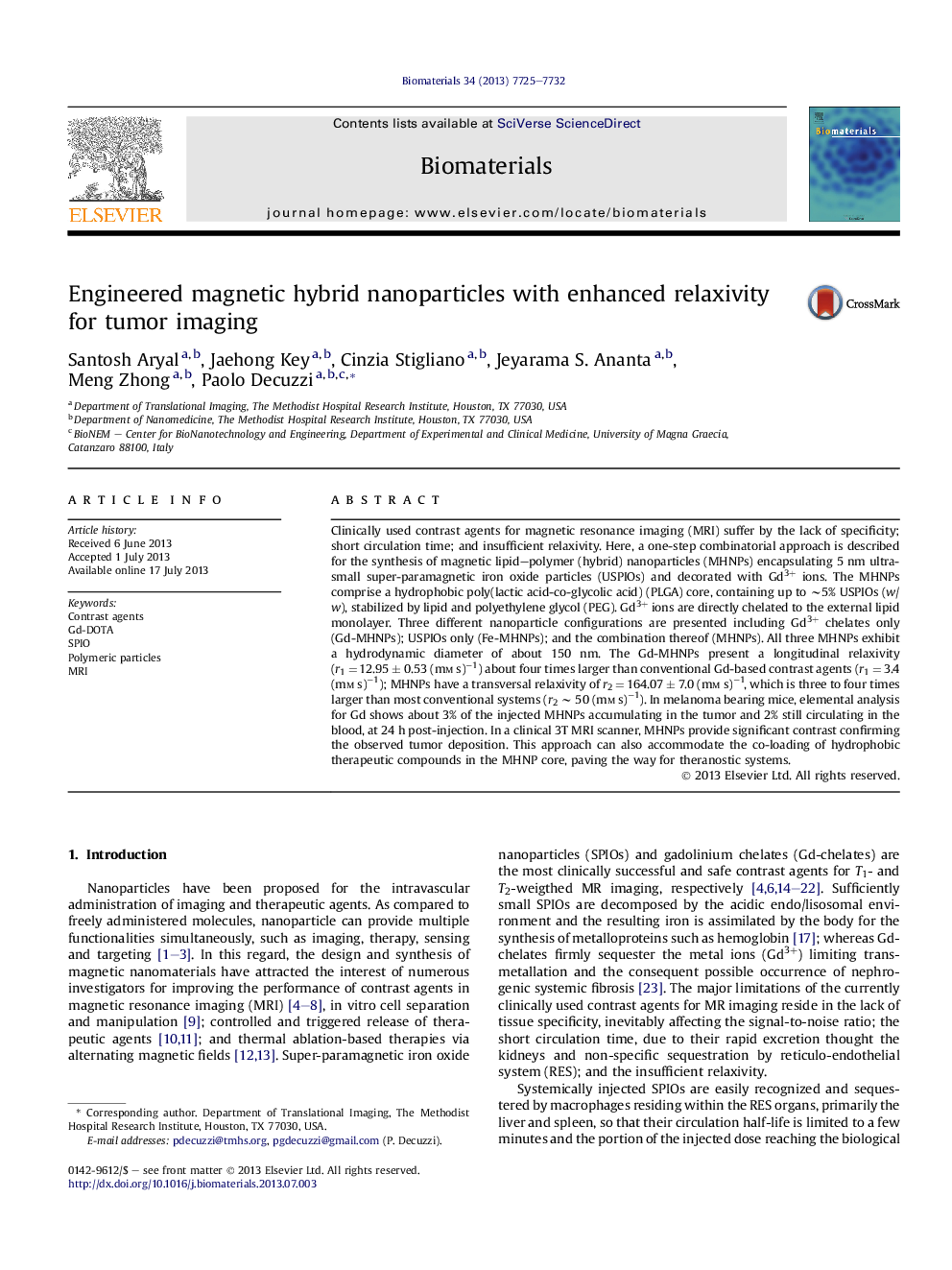| Article ID | Journal | Published Year | Pages | File Type |
|---|---|---|---|---|
| 5980 | Biomaterials | 2013 | 8 Pages |
Clinically used contrast agents for magnetic resonance imaging (MRI) suffer by the lack of specificity; short circulation time; and insufficient relaxivity. Here, a one-step combinatorial approach is described for the synthesis of magnetic lipid–polymer (hybrid) nanoparticles (MHNPs) encapsulating 5 nm ultra-small super-paramagnetic iron oxide particles (USPIOs) and decorated with Gd3+ ions. The MHNPs comprise a hydrophobic poly(lactic acid-co-glycolic acid) (PLGA) core, containing up to ∼5% USPIOs (w/w), stabilized by lipid and polyethylene glycol (PEG). Gd3+ ions are directly chelated to the external lipid monolayer. Three different nanoparticle configurations are presented including Gd3+ chelates only (Gd-MHNPs); USPIOs only (Fe-MHNPs); and the combination thereof (MHNPs). All three MHNPs exhibit a hydrodynamic diameter of about 150 nm. The Gd-MHNPs present a longitudinal relaxivity (r1 = 12.95 ± 0.53 (mm s)−1) about four times larger than conventional Gd-based contrast agents (r1 = 3.4 (mm s)−1); MHNPs have a transversal relaxivity of r2 = 164.07 ± 7.0 (mm s)−1, which is three to four times larger than most conventional systems (r2 ∼ 50 (mm s)−1). In melanoma bearing mice, elemental analysis for Gd shows about 3% of the injected MHNPs accumulating in the tumor and 2% still circulating in the blood, at 24 h post-injection. In a clinical 3T MRI scanner, MHNPs provide significant contrast confirming the observed tumor deposition. This approach can also accommodate the co-loading of hydrophobic therapeutic compounds in the MHNP core, paving the way for theranostic systems.
